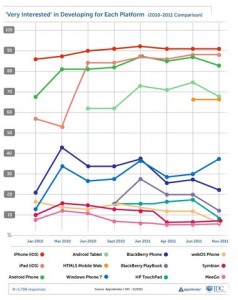By Douglas Alexander and Brian Steeves, CE Consultantshttp://www.componentsengineering.com
My first up close and personal experience with a resistor was a 9V transistor radio in the middle of a Dodgers baseball game in 1959.
I was listening to the game in the fourth grade with the earphone wire snaked from my jeans' front pocket, through my belt, (first historical use of a strain relief), under my sweater, up through the button hole in my collar, (second historical use of a strain relief), to insert the plug end, inconspicuously, as close as possible to my inner ear, cleverly designed to avoid the teacher’s detection.
All of a sudden, I began to smell something burning. Then I lost the audio entirely. At recess, I opened the back of my transistor radio to discover a cylindrical device with colored stripes printed around the cylinder with one of the two red stripes partially obliterated by a brown-black burn site that extended to the board and wiped out the “R” before the 10 label. I missed the end of the game but I did catch the end of my radio. Thus, my first experience with troubleshooting had begun with my nose and had ended with my eyes. Later in life, I heard my electronics professor telling me that I had discovered the first two steps for troubleshooting any circuit.
From that point on, I have developed a long-term professional relationship with the resistor, the most commonly used discrete device in electronics. The following is a discussion on some of the various resistor-based applications commonly in use today. This is not an exhaustive list, and the reader is invited to suggest other applications.
When placed in series with each other, with a tap connection between them, resistors are used as voltage dividers to produce a particular voltage from an input that is fixed or variable. This is one way to derive a bias voltage. The output voltage is proportional to that of the input and is usually smaller. Voltage dividers are useful for components that need to operate at a lesser voltage than that supplied by the input.
Resistors also help to filter signals used in oscillator circuits for video, audio, and many other clocked circuit devices. Used together with capacitors, this is known as an “RC” circuit, and the oscillation is a function of the two interacting to produce a time constant.
Because the flow of current through a resistor converts electrical energy into heat energy, the heat generated from the high resistance to the flow of the current is used commercially in the form of heating elements for irons, toasters, room heaters, electric stoves and ovens, dryers, coffee makers, and many other common household and industrial products. Similarly, it is the property of resistance that causes a filament to “glow” in light bulbs.
Current shunt resistors are low resistance precision resistors used to measure AC or DC electrical currents by the voltage drop those currents create across the resistance. Sometimes called an ammeter shunt, it is a type of current sensor.
Resistive power dividers or splitters have inherent characteristics that make them an excellent choice for certain applications, but unsuitable for others. In a lumped element divider, there is a 3dB loss in a simple two-way split. The loss numbers go up as the split count increases. Splitters can be used for both power and signal.
Resistors can be used in stepped configurations when they are tapped between multiple values or elements in a series. In the absence of a variable resistor (potentiometer), connecting to the various taps will allow for different fixed resistance values.
Using high-wattage wire-wound resistors as loads for 4-corner testing is a common practice in the qualification process of a power supply. By varying the line voltage and the resistive load to all four extremes, low line, high line, low load, and high load, a power supply’s operating limits can be determined.
(), invented and patented by the African-American Engineer Otis Boykin, are also ideal for compensating strain-gauge transducers. They offer the necessary accuracy and perform reliably at high temperatures. They are designed to minimize resistance value change, or to change in a controlled manner over different temperatures. Wire-Wound resistors are made by winding a length of wire on an insulating core. They can dissipate large power levels compared to other types and can be made with extremely tight resistance tolerances and controlled temperature characteristics.
Typically, a single, one-megaohm resistor is used with an antistatic or ESD wrist strap for safely grounding a person working on very sensitive electronic components or equipment. The wrist strap is connected to ground through a coiled, retractable cable with the 1 mega ohm resistorin series with ground. This allows for any high-voltage charges or transients to leak through to ground, preventing a voltage buildup on the technician’s body and thereby avoiding a component-damaging shock hazard when working with low-voltage tolerance parts. This Transient Resistor, formula symbol, is commonly referred to as a “mobile ohm”. These are usually designed in with a VoltsWagon pulling them.

Can I get a groan from someone? Author’s note: This is not an original pun, but I would rather diode than young. Author’s note: That was original. Sorry, I just couldn’t resist—or could I?
Passive terminators consist of a simple resistor. There are two types: (1) a resistor between signal and ground like in Ethernet, or (2) a resistor pair, one from the positive rail to signal with another from the signal to negative rail. Terminating resistors are widely used in paired transmission lines to prevent signal reflection.
See the entire article at Element14.com






 meme of
meme of 